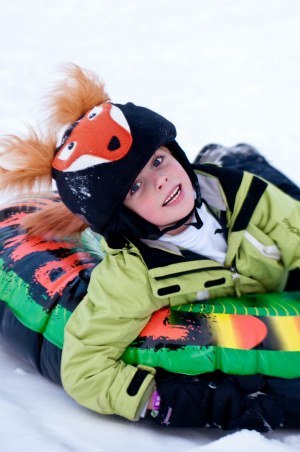
One of my favourite winter sports as a child was tobogganing. Racing to the top of the snowy hill and then rocketing down at full speed was exhilarating! Our favourite tobogganing run was Centennial Hill – half of the hill was reserved for skiers and the other half for toboggans. It was steep and long so by the time you were half way down, you were flying at an average of 60 miles per hour. Of course, tobogganing was even more thrilling when we build ramps so that we were airborne for a good five feet.
In retrospect, we were crazy. I’d never allow my kids to toboggan at full speed down Centennial Hill these days. There’s a fence and trees at the bottom of the run and, therefore, plenty of accidents during the winter months. I still remember another child who lost all of her front teeth. Broken arms and legs were also some of the casualties. But my biggest fear is head injuries. Brains can’t be replaced or repaired. Once you’ve sustained a head injury, you’re stuck with the damage for life.
Here are the facts: Statistics show that every year in Ontario at least one person dies from tobogganing. The last study done for the Canadian Hospitals Injury and Reporting Program measured sledding miscues between November 1994 and April 1995. It discovered a surprising total of 806 accidents across the country that year, with the vast majority happening to those between the ages of 10 and 14 years old. More than half of all the injuries reported were boys.
Most of the mishaps (nearly 60 percent) occurred in parks, while just a few took place in backyards, schools, or public places like roads or footpaths.
What were the most common injuries and how did they happen?
According to Health Canada, the breakdown reads this way:
40.1%: Fell to the ground while sliding
32.6%: Collided with an obstacle (tree, rock, wall, snow bank etc.)
15.3%: Hit another person
7.3%: Getting body part stuck in sled
2.4%: Sliding into street/river
1%: Injured while pulling or carrying toboggan
I am certainly not advocating for an end to tobogganing. In fact, I still think it’s one of the most affordable and fun outdoor family activities. But what I am trying to encourage is:
• Parents please assess the area before your child starts tobogganing. Are there any trees, fences or snowmaking equipment (usually found on ski slopes) that could cause serious injuries if your child hit them?
• Encourage children to wait their turn before heading down the slope.
• Insist that kids walk back up the tobogganing run along the sides of the hill NOT in the middle of the run.
• Most importantly, please make sure your child is wearing a skate, ski or snowboard helmet. Unfortunately, bike helmets will not properly protect your child’s head in a tobogganing accident.
Do you have any further recommendations to help ensure the safety of our children? I’d love your feedback!
Nice Article